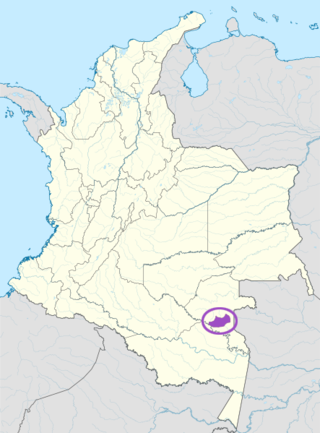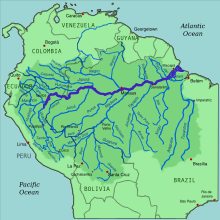You can help expand this article with text translated from the corresponding article in Portuguese. (February 2025)Click [show] for important translation instructions.
|
| Barasana-Eduria | |
|---|---|
| Taiwano, Jãnerã - Eduria Oca | |
| Native to | Colombia |
| Ethnicity | Barasana, Eduria |
Native speakers | (1,900 cited 1993 census) [1] |
Tucanoan
| |
| Dialects |
|
| Language codes | |
| ISO 639-3 | bsn |
| Glottolog | bara1380 |
| ELP | Barasano |
 | |
Barasana is a Tucanoan language of Colombia. It belongs to the Eastern branch of the Tucanoan family and is spoken in the Amazonian region by the Barasana people. The population of its native speakers is about 1,990 according to a census taken in 1993. [2] Native speakers' tribes are spread out along the Pira Paraná River in Colombia and the banks of the Vaupés River Basin. [3]
Contents
- Classification
- Geographic distribution
- Dialects/Varieties
- Phonology
- Examples
- Vowels
- Consonants
- Grammar
- Mood and modality
- Examples 2
- References
The different dialects within this language group utilize their individual varieties as barriers to distinguish themselves through their own identity. Marriages between two people who speak the same language are taboo, as it is seen as akin to marrying their own brothers and sisters. [3] Instead, Barasanans participate in exogamous marriages, which promote multilingualism of the people in the region. This also serves as an explanation for similarities between different dialects in the region. Barasana and Eduria are often considered separate languages by the individuals of these groups, who are allowed to intermarry. However, the languages' similarities are up to 98%; the other 2% accounts for minor differences in phonology. [2]
Many grammatical characteristics of Barasana distinguish it from various other groups in the language family. Out of the Eastern Tucanoan languages, Barasana is the only one to maintain a three-way distinction between spatial and temporal distances. [4] It also differs in many other aspects, such as nasality, phoneme inventories, and imperative morphology.
